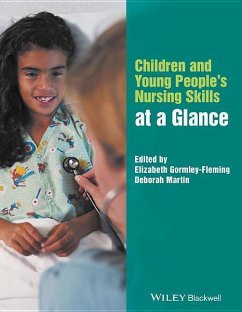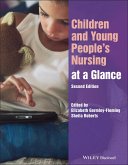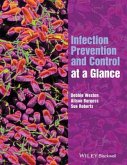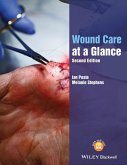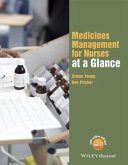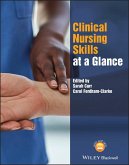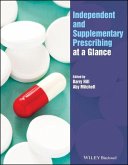Children and Young People's Nursing Skills at a Glance
Herausgeber: Martin, Deborah; Gormley-Fleming, Elizabeth
Children and Young People's Nursing Skills at a Glance
Herausgeber: Martin, Deborah; Gormley-Fleming, Elizabeth
- Broschiertes Buch
- Merkliste
- Auf die Merkliste
- Bewerten Bewerten
- Teilen
- Produkt teilen
- Produkterinnerung
- Produkterinnerung
Children and Young People s Nursing Skills at a Glance is the perfect companion for study and revision for pre-registration children s nursing students. Highly visual, each clinical skill is covered in a two-page spread, with superb colour illustrations accompanied by clear informative text.
Andere Kunden interessierten sich auch für
![Children and Young People's Nursing at a Glance Children and Young People's Nursing at a Glance]() Children and Young People's Nursing at a Glance51,99 €
Children and Young People's Nursing at a Glance51,99 €![Infection Prevention and Control at a Glance Infection Prevention and Control at a Glance]() Debbie Weston (East Kent Hospitals NHS Trust, Kent, UK)Infection Prevention and Control at a Glance46,99 €
Debbie Weston (East Kent Hospitals NHS Trust, Kent, UK)Infection Prevention and Control at a Glance46,99 €![Nursing and Healthcare Research at a Glance Nursing and Healthcare Research at a Glance]() Nursing and Healthcare Research at a Glance45,99 €
Nursing and Healthcare Research at a Glance45,99 €![Wound Care at a Glance Wound Care at a Glance]() Ian Peate (Gibraltar Gibraltar Health Authority)Wound Care at a Glance48,99 €
Ian Peate (Gibraltar Gibraltar Health Authority)Wound Care at a Glance48,99 €![Medicines Management for Nurses at a Glance Medicines Management for Nurses at a Glance]() Simon Young (University of South Wales)Medicines Management for Nurses at a Glance46,99 €
Simon Young (University of South Wales)Medicines Management for Nurses at a Glance46,99 €![Clinical Nursing Skills at a Glance Clinical Nursing Skills at a Glance]() Sarah CurrClinical Nursing Skills at a Glance49,99 €
Sarah CurrClinical Nursing Skills at a Glance49,99 €![Independent and Supplementary Prescribing At a Glance Independent and Supplementary Prescribing At a Glance]() Independent and Supplementary Prescribing At a Glance44,99 €
Independent and Supplementary Prescribing At a Glance44,99 €-
-
-
Children and Young People s Nursing Skills at a Glance is the perfect companion for study and revision for pre-registration children s nursing students. Highly visual, each clinical skill is covered in a two-page spread, with superb colour illustrations accompanied by clear informative text.
Hinweis: Dieser Artikel kann nur an eine deutsche Lieferadresse ausgeliefert werden.
Hinweis: Dieser Artikel kann nur an eine deutsche Lieferadresse ausgeliefert werden.
Produktdetails
- Produktdetails
- At a Glance (Nursing and Healthcare)
- Verlag: John Wiley and Sons Ltd
- Seitenzahl: 160
- Erscheinungstermin: 2. März 2018
- Englisch
- Abmessung: 213mm x 269mm x 16mm
- Gewicht: 440g
- ISBN-13: 9781119078531
- ISBN-10: 1119078539
- Artikelnr.: 48251124
- Herstellerkennzeichnung
- Libri GmbH
- Europaallee 1
- 36244 Bad Hersfeld
- gpsr@libri.de
- At a Glance (Nursing and Healthcare)
- Verlag: John Wiley and Sons Ltd
- Seitenzahl: 160
- Erscheinungstermin: 2. März 2018
- Englisch
- Abmessung: 213mm x 269mm x 16mm
- Gewicht: 440g
- ISBN-13: 9781119078531
- ISBN-10: 1119078539
- Artikelnr.: 48251124
- Herstellerkennzeichnung
- Libri GmbH
- Europaallee 1
- 36244 Bad Hersfeld
- gpsr@libri.de
Elizabeth Gormley-Fleming is Head of Department for Nursing (Children's, Learning Disability and Mental Health) and Social Work, School of Health and Social Work, University of Hertfordshire, Hatfield, UK. Deborah Martin is Senior Lecturer Children's Nursing, University of Hertfordshire, Hatfield, UK.
Contributors ix
Preface x
Part 1: Assessing children: Principles
1 Initial assessment: subjective 2
2 History taking 4
3 Principles of systematic assessment 6
4 Communication 8
5 Developmental considerations 10
6 Informed consent 12
7 Safeguarding 14
8 Family-centred care 16
9 Record keeping 18
10 Planning care 20
Part 2: Assessment of the child: Objective data
11 Airway and breathing 22
12 Circulatory assessment 24
13 Measuring blood pressure 26
14 Assessment of pain 28
15 Moving and handling 30
16 Measuring temperature 32
17 Weight, BMI, height/length and head circumference 34
18 Blood glucose monitoring 36
19 Skin integrity 38
20 Pulse oximetry 40
Part 3: Drug administration
21 Principles of drug administration 42
22 Drug calculations 44
23 Administration of medication 46
24 Inhaled drug administration 48
25 Intranasal diamorphine 50
26 Intravenous fluid administration 52
Part 4: Respiratory
27 Spirometry 54
28 Peak expiratory flow 56
29 Arterial blood gas sampling 58
30 Oxygen administration 60
31 Suctioning 62
32 Tracheostomy care 64
33 Non-invasive ventilation 66
34 Underwater seal drain 68
Part 5: Gastrointestinal
35 Infant feeding 70
36 Breastfeeding 72
37 Formula feeding 74
38 Insertion of nasogastric and nasojejunal tubes 76
39 Nasogastric tube feeding 78
40 Gastrostomy feeding 80
Part 6: Renal
41 Urine collection 82
42 Catheter insertion 84
43 Catheter care 86
Part 7: Neurological
44 Neurological assessment in children 88
45 Preparation for lumbar puncture 90
Part 8: Musculoskeletal
46 Neurovascular assessment 92
47 Care of a cast 94
48 Skin traction 96
Part 9: Skin
49 SteriStrip(TM) application 98
50 Wet wrapping in atopic eczema 100
Part 10: Cardiac
51 12-lead electrocardiography 102
52 3-lead electrocardiography 104
Part 11: Pre- and post-operative care
53 Pre-operative care and transfer to theatre 106
54 Post-operative recovery 108
Part 12: Emergency Care
55 Basic life support (BLS) 110
56 Advanced resuscitation of the infant and child 112
57 Transfer of the critically ill child 114
Part 13: Newborn
58 Phototherapy 116
59 Care of the umbilicus 118
Part 14: Infection control
60 Hand washing 120
61 Aseptic non-touch technique 122
Part 15: Haematology
62 Obtaining blood samples 124
63 Transfusion of blood and blood components 126
64 Cannulation 129
Part 16: End-of-life care
65 Care of the dying child 132
66 Care after death 134
Index 136
Preface x
Part 1: Assessing children: Principles
1 Initial assessment: subjective 2
2 History taking 4
3 Principles of systematic assessment 6
4 Communication 8
5 Developmental considerations 10
6 Informed consent 12
7 Safeguarding 14
8 Family-centred care 16
9 Record keeping 18
10 Planning care 20
Part 2: Assessment of the child: Objective data
11 Airway and breathing 22
12 Circulatory assessment 24
13 Measuring blood pressure 26
14 Assessment of pain 28
15 Moving and handling 30
16 Measuring temperature 32
17 Weight, BMI, height/length and head circumference 34
18 Blood glucose monitoring 36
19 Skin integrity 38
20 Pulse oximetry 40
Part 3: Drug administration
21 Principles of drug administration 42
22 Drug calculations 44
23 Administration of medication 46
24 Inhaled drug administration 48
25 Intranasal diamorphine 50
26 Intravenous fluid administration 52
Part 4: Respiratory
27 Spirometry 54
28 Peak expiratory flow 56
29 Arterial blood gas sampling 58
30 Oxygen administration 60
31 Suctioning 62
32 Tracheostomy care 64
33 Non-invasive ventilation 66
34 Underwater seal drain 68
Part 5: Gastrointestinal
35 Infant feeding 70
36 Breastfeeding 72
37 Formula feeding 74
38 Insertion of nasogastric and nasojejunal tubes 76
39 Nasogastric tube feeding 78
40 Gastrostomy feeding 80
Part 6: Renal
41 Urine collection 82
42 Catheter insertion 84
43 Catheter care 86
Part 7: Neurological
44 Neurological assessment in children 88
45 Preparation for lumbar puncture 90
Part 8: Musculoskeletal
46 Neurovascular assessment 92
47 Care of a cast 94
48 Skin traction 96
Part 9: Skin
49 SteriStrip(TM) application 98
50 Wet wrapping in atopic eczema 100
Part 10: Cardiac
51 12-lead electrocardiography 102
52 3-lead electrocardiography 104
Part 11: Pre- and post-operative care
53 Pre-operative care and transfer to theatre 106
54 Post-operative recovery 108
Part 12: Emergency Care
55 Basic life support (BLS) 110
56 Advanced resuscitation of the infant and child 112
57 Transfer of the critically ill child 114
Part 13: Newborn
58 Phototherapy 116
59 Care of the umbilicus 118
Part 14: Infection control
60 Hand washing 120
61 Aseptic non-touch technique 122
Part 15: Haematology
62 Obtaining blood samples 124
63 Transfusion of blood and blood components 126
64 Cannulation 129
Part 16: End-of-life care
65 Care of the dying child 132
66 Care after death 134
Index 136
Contributors ix
Preface x
Part 1: Assessing children: Principles
1 Initial assessment: subjective 2
2 History taking 4
3 Principles of systematic assessment 6
4 Communication 8
5 Developmental considerations 10
6 Informed consent 12
7 Safeguarding 14
8 Family-centred care 16
9 Record keeping 18
10 Planning care 20
Part 2: Assessment of the child: Objective data
11 Airway and breathing 22
12 Circulatory assessment 24
13 Measuring blood pressure 26
14 Assessment of pain 28
15 Moving and handling 30
16 Measuring temperature 32
17 Weight, BMI, height/length and head circumference 34
18 Blood glucose monitoring 36
19 Skin integrity 38
20 Pulse oximetry 40
Part 3: Drug administration
21 Principles of drug administration 42
22 Drug calculations 44
23 Administration of medication 46
24 Inhaled drug administration 48
25 Intranasal diamorphine 50
26 Intravenous fluid administration 52
Part 4: Respiratory
27 Spirometry 54
28 Peak expiratory flow 56
29 Arterial blood gas sampling 58
30 Oxygen administration 60
31 Suctioning 62
32 Tracheostomy care 64
33 Non-invasive ventilation 66
34 Underwater seal drain 68
Part 5: Gastrointestinal
35 Infant feeding 70
36 Breastfeeding 72
37 Formula feeding 74
38 Insertion of nasogastric and nasojejunal tubes 76
39 Nasogastric tube feeding 78
40 Gastrostomy feeding 80
Part 6: Renal
41 Urine collection 82
42 Catheter insertion 84
43 Catheter care 86
Part 7: Neurological
44 Neurological assessment in children 88
45 Preparation for lumbar puncture 90
Part 8: Musculoskeletal
46 Neurovascular assessment 92
47 Care of a cast 94
48 Skin traction 96
Part 9: Skin
49 SteriStrip(TM) application 98
50 Wet wrapping in atopic eczema 100
Part 10: Cardiac
51 12-lead electrocardiography 102
52 3-lead electrocardiography 104
Part 11: Pre- and post-operative care
53 Pre-operative care and transfer to theatre 106
54 Post-operative recovery 108
Part 12: Emergency Care
55 Basic life support (BLS) 110
56 Advanced resuscitation of the infant and child 112
57 Transfer of the critically ill child 114
Part 13: Newborn
58 Phototherapy 116
59 Care of the umbilicus 118
Part 14: Infection control
60 Hand washing 120
61 Aseptic non-touch technique 122
Part 15: Haematology
62 Obtaining blood samples 124
63 Transfusion of blood and blood components 126
64 Cannulation 129
Part 16: End-of-life care
65 Care of the dying child 132
66 Care after death 134
Index 136
Preface x
Part 1: Assessing children: Principles
1 Initial assessment: subjective 2
2 History taking 4
3 Principles of systematic assessment 6
4 Communication 8
5 Developmental considerations 10
6 Informed consent 12
7 Safeguarding 14
8 Family-centred care 16
9 Record keeping 18
10 Planning care 20
Part 2: Assessment of the child: Objective data
11 Airway and breathing 22
12 Circulatory assessment 24
13 Measuring blood pressure 26
14 Assessment of pain 28
15 Moving and handling 30
16 Measuring temperature 32
17 Weight, BMI, height/length and head circumference 34
18 Blood glucose monitoring 36
19 Skin integrity 38
20 Pulse oximetry 40
Part 3: Drug administration
21 Principles of drug administration 42
22 Drug calculations 44
23 Administration of medication 46
24 Inhaled drug administration 48
25 Intranasal diamorphine 50
26 Intravenous fluid administration 52
Part 4: Respiratory
27 Spirometry 54
28 Peak expiratory flow 56
29 Arterial blood gas sampling 58
30 Oxygen administration 60
31 Suctioning 62
32 Tracheostomy care 64
33 Non-invasive ventilation 66
34 Underwater seal drain 68
Part 5: Gastrointestinal
35 Infant feeding 70
36 Breastfeeding 72
37 Formula feeding 74
38 Insertion of nasogastric and nasojejunal tubes 76
39 Nasogastric tube feeding 78
40 Gastrostomy feeding 80
Part 6: Renal
41 Urine collection 82
42 Catheter insertion 84
43 Catheter care 86
Part 7: Neurological
44 Neurological assessment in children 88
45 Preparation for lumbar puncture 90
Part 8: Musculoskeletal
46 Neurovascular assessment 92
47 Care of a cast 94
48 Skin traction 96
Part 9: Skin
49 SteriStrip(TM) application 98
50 Wet wrapping in atopic eczema 100
Part 10: Cardiac
51 12-lead electrocardiography 102
52 3-lead electrocardiography 104
Part 11: Pre- and post-operative care
53 Pre-operative care and transfer to theatre 106
54 Post-operative recovery 108
Part 12: Emergency Care
55 Basic life support (BLS) 110
56 Advanced resuscitation of the infant and child 112
57 Transfer of the critically ill child 114
Part 13: Newborn
58 Phototherapy 116
59 Care of the umbilicus 118
Part 14: Infection control
60 Hand washing 120
61 Aseptic non-touch technique 122
Part 15: Haematology
62 Obtaining blood samples 124
63 Transfusion of blood and blood components 126
64 Cannulation 129
Part 16: End-of-life care
65 Care of the dying child 132
66 Care after death 134
Index 136

